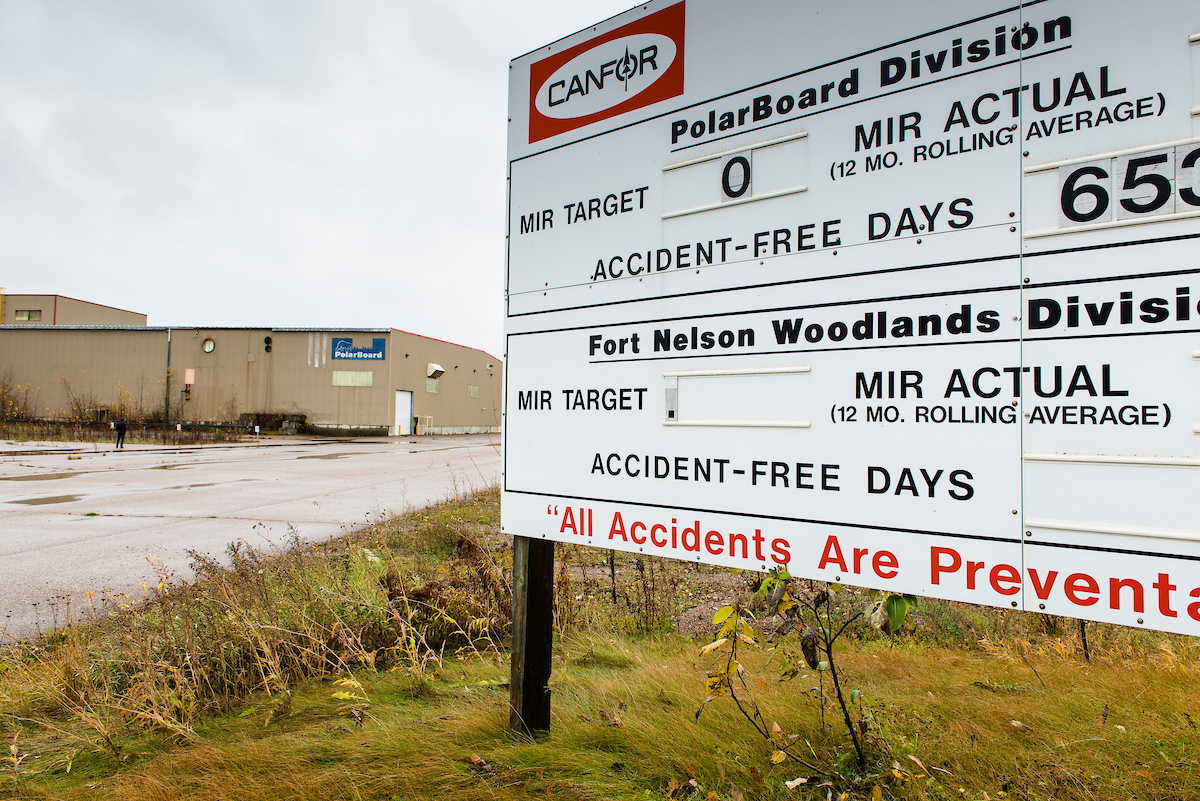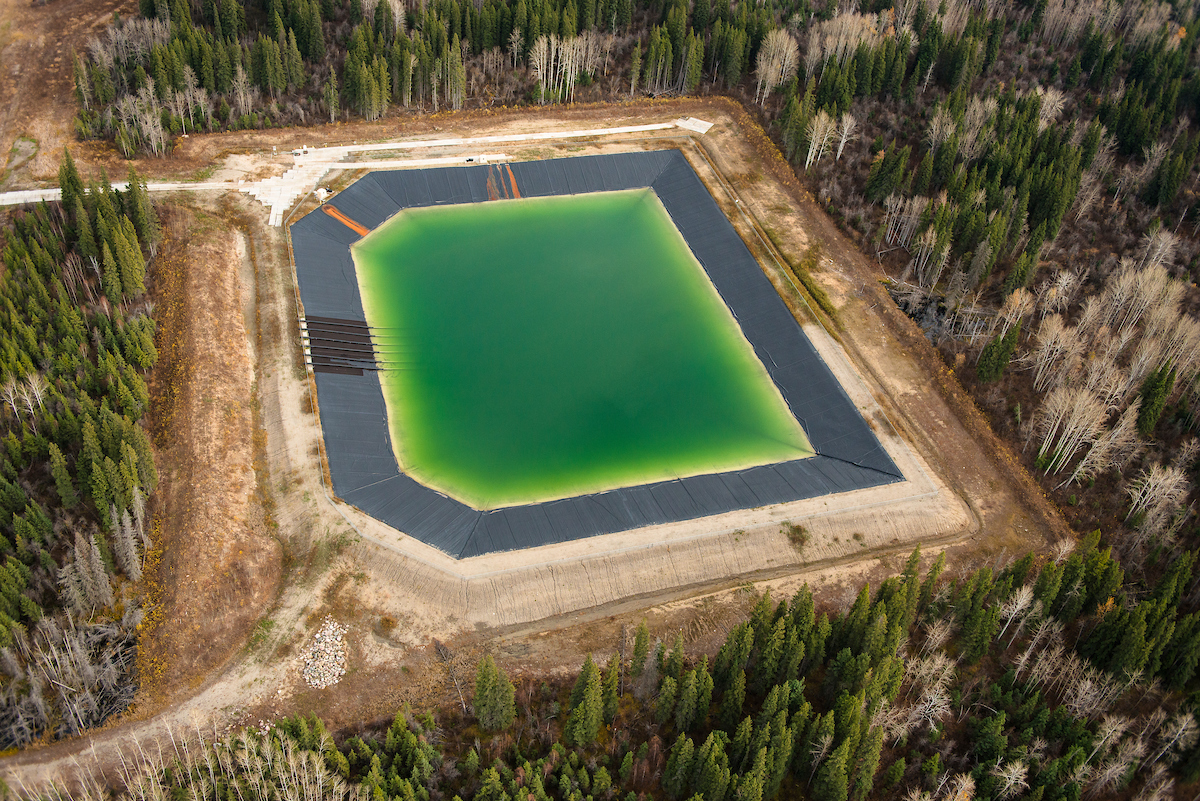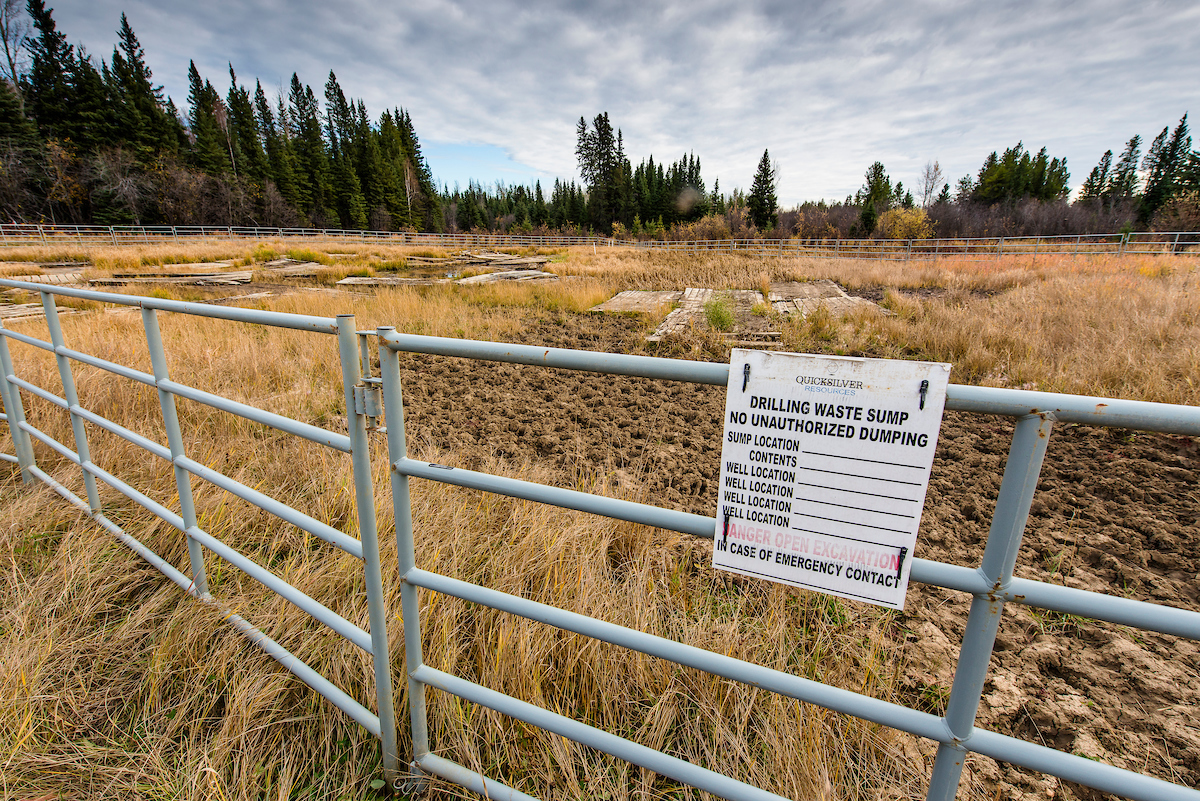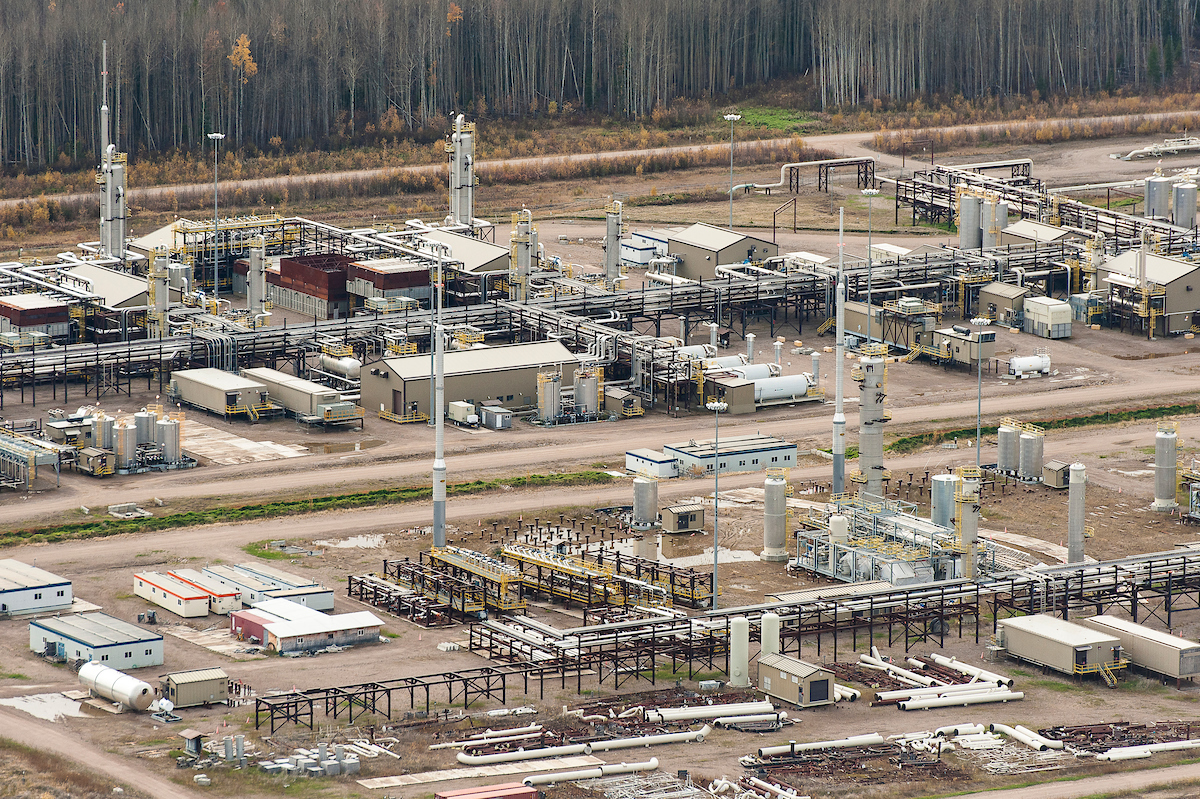In the face of the economic fallout from COVID-19, it’s easy to forget that some communities in British Columbia were in deep fiscal distress long before the pandemic began.
Fort Nelson is a good example, and a textbook case of why senior levels of government need to be mindful when they roll out recovery plans such as the announced $1.7 billion in federal funding to address clean-up costs at aging oil and natural gas wells.
In 2008, BC’s northernmost city was rocked by news that logging and sawmilling giant, Canfor, was closing two panel mills. Four hundred and thirty five men and women, among the highest paid workers in their community, lost their jobs. The mills never reopened.

Not long after that gut-wrenching event, the city’s economic hopes resurged as some of the biggest names in North America’s oil and gas industry swept into the region, initiating a new wave of natural gas drilling the likes of which no one had previously seen.
Thanks to companies fracking shale formations everywhere from Texas to northern BC, gas prices plummeted.
The fossil fuel equivalent of a gold rush owed its roots to developments in distant Texas, where companies had figured out how to force oil and gas out of stubborn shale rock by blasting it with tremendous volumes of water, sand and chemicals in fracking operations. With that innovation, a wave of drilling and fracking for “shale oil” and “shale gas” swept across North America.
Before long, Encana, Apache, Nexen, Chevron and other energy companies swarmed Fort Nelson. The city’s main street buzzed with pickup trucks, its hotels and restaurants were fully booked, and the bar tabs ran high.
A traffic jam in the middle of nowhere
I personally witnessed the early days of the rush on the region’s shale gas resources and will not soon forget it. In the fall of 2010, I arrived at the offices of the Fort Nelson First Nation, where a member of the Nation’s Lands Department waited for me in a fully fueled pickup truck.
We planned to drive nearly two hours east to a giant clearing in the boreal forest where Encana (now Ovintiv) was building the new Cabin natural gas plant. But we never made it. After driving almost an hour-and-a-half down gravel roads that had been widened to accommodate the trucks now roaring through the muskeg, we hit a traffic jam in the middle of nowhere. Before us stood a line of idled 18-wheelers, lined bumper-to-bumper for as far as the eye could see. There was nowhere to go but back to town.
Today you can drive the 320 kilometre round-trip to the Cabin gas plant from Fort Nelson and not see a soul. And as for that natural gas plant? It never produced an ounce of gas.
It didn’t take long for the short-lived boom to turn to bust, however. Thanks to companies fracking shale formations everywhere from Texas to northern BC, gas prices plummeted. Just as quickly as the companies rushed into Fort Nelson, or Northern Rockies Regional Municipality, they were gone.[1] Among those to pull up stakes was Encana, which sold a majority stake in its gas plant to focus its BC extraction efforts a six hour’s drive to the south in the Dawson Creek area. Today you can drive the 320 kilometre round-trip to the Cabin gas plant from Fort Nelson and not see a soul. And as for that natural gas plant? It never produced an ounce of gas.
A bad combination
Fort Nelson, with its relative isolation, has always faced economic challenges. But that’s not the only reason why it went from energy industry boom town to ghost town. Adding to its woes, the region’s shale formations are particularly obstinate. It takes way more fracking to get the same unit of gas out of the ground in the Fort Nelson region as it does elsewhere. The region’s natural gas resources are also mostly “dry”, meaning they lack the lucrative “wet” constituents like condensate that command higher prices. In short, it costs more to operate in the region and what’s produced sells for less. That’s never a good thing.
The natural gas industry isn’t coming back to Fort Nelson any time soon, a hard but unavoidable economic reality for Fort Nelson’s residents. But there’s another sad reality as well—a deteriorating network of gas industry infrastructure, abandoned gas wells, massive wastewater pits designed to hold the toxic flowback water from fracking operations, aging compressor stations, seismic lines and pipelines. Not to mention that half-billion dollar gas plant that may never operate.

“Fort Nelson’s been hard hit by the downturn in the oil and gas industry . . . disproportionately hard compared to other communities,” says the city’s mayor, Gary Foster.
“None of us have control over the price of commodities,” Foster adds. “The price of gas, the price of a two-by-four, all these things are commodity-driven and we don’t have a magic wand to change that. But what we do have [control over] is good public policy that mitigates those downturns and ensures that a community like the Northern Rockies is viable going forward.”
The natural gas industry isn’t coming back to Fort Nelson any time soon, a hard but unavoidable economic reality for Fort Nelson’s residents.
Foster believes good public policy begins with senior levels of government acknowledging the economic contributions that rural regions make when times are good and then truly helping them out when times are bad.
Foster notes that when lumber prices were high and Canfor was in town, everyone in the province benefitted from the high stumpage or timber-cutting revenues that flowed into provincial coffers. When natural gas prices were high and Encana and others swept into the region, the economic windfall was even greater. Companies paid the provincial government handsomely for the rights to access the region’s fossil fuel resources. And if the companies later drilled for gas and put it into pipelines, they paid royalties as well.
“I’m not an economist,” Foster says. “But I know what I saw in the past decades here in the Northern Rockies. We contributed millions and millions of dollars primarily into the provincial coffers.” Now, Foster says, everything that his region contributed to the provincial economy is forgotten and the people living in the region feel like they’ve been abandoned.
A glimmer of hope
If there is a glimmer of hope today as far as the region’s economy is concerned, it’s that the federal government has stepped forward and committed to turning $1.7 billion over to the provincial governments in British Columbia, Alberta and Saskatchewan to help reclaim orphaned and inactive oil and gas wells in the provinces, Foster says. When done, that reclamation work is supposed to include sealing and capping well heads to ensure that no leakage occurs and revegetating sites to ensure that they resemble what was there before the drilling occurred.
For years, the provincial governments in Canada’s three westernmost provinces have known that the number of deteriorating oil and gas industry installations within their borders was growing like an aggressive cancer. Provincial energy industry regulators were also acutely aware that they had failed to collect enough money up front from oil and gas companies to pay for the reclamation of old, abandoned well sites, and that a growing portfolio of “inactive” and “orphan” wells represented a potentially huge, unfunded public liability.
The federal government announced in April that it intended to help reclaim a small portion of the lands damaged by oil and gas industry activities while putting people to work in the industry during the COVID-19 pandemic.
For years, the provincial governments in Canada’s three westernmost provinces have known that the number of deteriorating oil and gas industry installations within their borders was growing like an aggressive cancer.
When the funding was announced, federal documents indicated that the money would apply to clean-up costs at 4,700 so-called “orphan” wells in Alberta and another 950 such wells in BC and Saskatchewan, as well as 91,000 “inactive” wells in Alberta and another 48,000 such wells in Saskatchewan and BC.
Orphan wells are perhaps the most problematic of all oil and gas industry sites because the companies that drilled them no longer exist, whereas inactive wells are wells where there has been no active gas or oil production for five years but that are still on company books and theoretically still the responsibility of those companies to clean up.

Massive clean-up costs
That the funding must be found to do the clean-up work is obvious. In Alberta, the province with the most intense oil and gas industry activity and therefore the biggest clean-up bill, it is estimated that up to $260 billion is needed to clean up its inactive pipelines, wells, plants and oil sands mines.
In British Columbia, which is expected to produce the lion’s share of Canada’s natural gas in the coming years, the projected clean-up cost is far less for now, but it is accelerating at a steady clip. Between 2007 and 2018, the number of inactive or dormant wells in the province almost doubled—from 3,800 to 7,474, according to a report by the province’s Auditor General.
The same report noted that BC’s oil and gas industry regulator, the Oil and Gas Commission, has estimated that decommissioning inactive wells and restoring sites will cost operators $3 billion.
Between 2007 and 2018, the number of inactive or dormant wells in the province almost doubled—from 3,800 to 7,474, according to a report by the province’s Auditor General.
BC’s Auditor General’s noted further that the number of orphan wells in the province is also growing at a steady clip, and that the money generated from levies on oil and gas company development permits to clean up those wells has not kept pace with mounting liabilities.
To underscore the speed at which the number of orphan wells is growing in the province, there are now 770 orphan wells in BC. Five years ago, there were just 45. The number of wells more than doubled in 2020 alone due to the insolvency of Ranch Energy, a Calgary-based company.
Many of Ranch’s wells, Foster notes, are in the Fort Nelson region.
To underscore the speed at which the number of orphan wells is growing in the province, there are now 770 orphan wells in BC. Five years ago, there were just 45.
After unveiling the $1.7 billion program, the federal government turned monies over to the provincial governments and it fell to them to put out calls for bids to do the work.
Following the federal announcement, the BC government unveiled that it would spend $120 million (its share of the federal funds) on well reclamation projects and that the money was expected to provide temporary support for 1,200 jobs.
The bulk of the money ($100 million) was earmarked for inactive wells, another $15 million was earmarked for orphan wells , and the remaining $5 million was to be spent to “mitigate” the environmental impacts of earlier oil and gas exploration projects. The province said that it would provide $100,000 to successful applicants per well.
Wildly optimistic projections
Bruce Ralston, BC’s Minister of Energy, Mines and Petroleum Resources, said that the Province would solicit input from First Nations and rural communities to nominate sites for decommissioning, reclamation and restoration.
“Through these three programs, we are accelerating the cleanup of thousands of orphan and inactive wells,” Ralston claimed. “This allows us to restore lands of important environmental and cultural relevance.”
But the minister’s claims appear to wildly overstate the benefits the funds will actually deliver. Under the program, the provincial government will pay successful applicants $100,000, or 50 per cent of the costs, whichever is less, to help clean up well sites. The companies applying for the funds will cover the other half. Given that the provincial Auditor General estimates that the average inactive or orphaned well site will cost $370,000 to seal and restore, it’s unlikely that the federal money doled out by the province could help restore anything more than 1,150 wells.
In late May, the provincial government announced that it had been deluged with 1,100 applications for the first tranche of money made available, which was about half of the $120 million.
It’s unlikely that the federal money doled out by the province could help restore anything more than 1,150 wells.
Foster says because the province tried to get the first allotment of money out the door as quickly as possible to get people to work, that communities and First Nations were not, in fact, consulted on where the funds should best be spent. As far as he knows, no companies in Fort Nelson received any funding in the first go-round. And the municipality and Fort Nelson First Nation alike say they need to be listened to the second time around when they suggest nearby well sites that they feel should be given priority for restoration.
Not just abandoned gas wells to worry about
Foster says the scale of the clean-up challenge in his region is such that the current program will make only a tiny dent in the work that needs to be done.
He would like to see the BC government do a number of things:
First, prioritize clean-up efforts on orphan wells, which are the most obvious environmental liability, given that many of them are leaking methane, a highly potent greenhouse gas, to the atmosphere and possibly contaminating soil and groundwater as well.
“We don’t want to see orphan wells damage our environment. We want them cleaned up.”
Second, the provincial government, in particular, needs to do a thorough assessment of all outstanding oil and gas industry liabilities and ensure that the funds are there to clean such sites up.
Some kind of inventory needs to be done that paints a true picture of all the outstanding liabilities associated with oil and gas industry activities and that ensures that funds are there to clean everything up, not just oil and gas wells
Foster notes that it is not just abandoned oil and gas wells that the public needs to be concerned about, but massive lined pits that hold toxic wastewater from fracking operations—which have been known to leak and damage groundwater, aging pipelines and compressor stations, and gas processing facilities. The idled gas Cabin gas plant that Encana started to build and then sold and walked away from is a good case in point.

Foster said that gas plant “could very well end up in the hands of a bankrupt company” that doesn’t have the funds to do what’s necessary, as happened with Ranch. “We would expect that the provincial government and the federal government would have sufficient regulations in place to make sure that it is not simply a scar on the landscape,” Foster said. “These things need to be addressed.”
Some kind of inventory needs to be done that paints a true picture of all the outstanding liabilities associated with oil and gas industry activities and that ensures that funds are there to clean everything up, not just oil and gas wells. As Reagan Boychuk, a researcher with the Alberta Liabilities Disclosure Project—a coalition of academics and landowners pushing for more government transparency on the liability issue—notes, many companies operating in Western Canada are insolvent. “They have more financial and environmental debt than they can realistically expect to generate in profits.”
Investing funds where most needed
Third, Foster says a priority must be given to doing environmental reclamation work where it is also likely to have the greatest social benefits. For now, and the foreseeable future what natural gas production does occur in BC. will be largely in the Montney Basin, in and around the communities of Fort St. John and Dawson Creek.
A priority must be given to doing environmental reclamation work where it is also likely to have the greatest social benefits.
Even if his community, which once pinned its hopes on liquefied natural gas, were to see a rebound in natural gas industry activities, Foster doesn’t believe it would materialize for a number of years. Reclamation work in and around Fort Nelson should therefore be the provincial priority, and would represent “good public policy,” Foster says.
“We can’t have damage to the environment and have people walk away. If there’s money there to reclaim these things, we should be doing that now when Fort Nelson is in some economic straits.”
Notes
[1] The Northern Rockies Regional Municipality is British Columbia’s first regional municipality and was incorporated in 2009. It officially combines the former entities of the Town of Fort Nelson and the Northern Rockies Regional District. The boundaries mimic the previous Regional District, encompassing about 10% of the province’s landmass, or nearly 86,000 square kilometres.
This research is supported by the Social Science and Humanities Research Council of Canada (SSHRC) and the Minor Foundation for Major Challenges.
Author: Ben Parfitt
Ben is the resource policy analyst with the Canadian Centre for Policy Alternatives – BC Office. He has received numerous awards for his investigative journalism, is a co-author and author of two books on forestry, and is a long-established researcher and policy analyst specializing in natural resource management and environmental issues. Reports and analysis for the CCPA–BC include Fracking, First Nations and Water: Respecting Indigenous rights and better protecting our shared resources (June 2017); A Dam Big Problem: Regulatory breakdown as fracking companies in BC’s northeast build dozens of unauthorized dams (May 2017); From disenfranchised to revitalized: Ten proposals to set our forests and BC’s rural communities on a new course (March 2016); Counting Every Drop: The case for water use reporting in BC (June 2013); and Fracking Up Our Water, Hydro Power and Climate: BC’s reckless pursuit of shale gas (November 2011).





